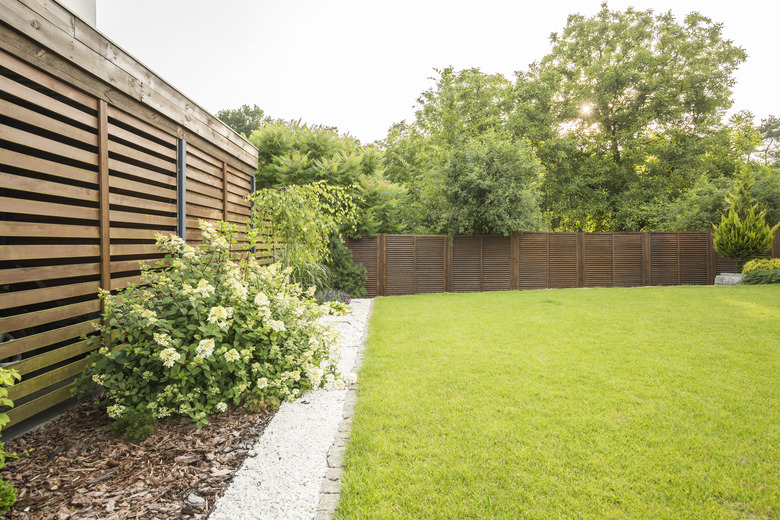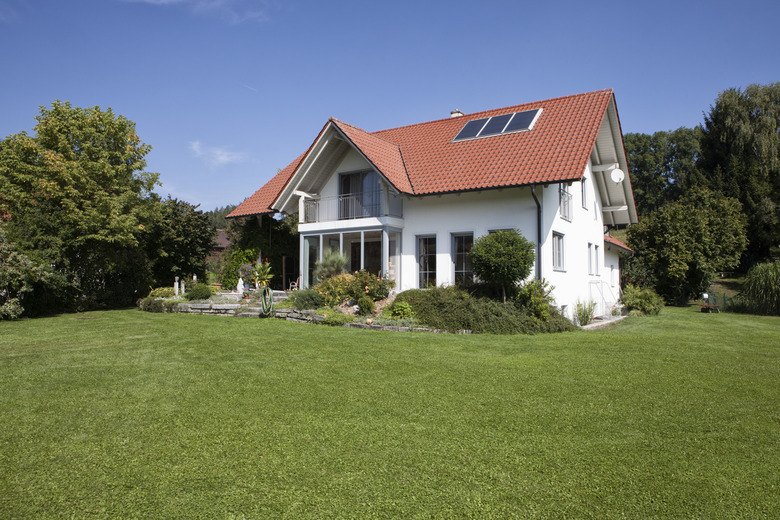Common Lawn Problems And How To Fix Them
Your lawn says as much about your home and property as your actual house, which is why lawn care is such an important part of home maintenance. Just as you should take care of structural issues with your home quickly before they create the need for expensive repairs, you should take care of common lawn problems early before they cause permanent damage to the lawn. Unlike your house, your lawn is alive, and it will work with you to regenerate itself as long as you do your part.
Some of the most common lawn problems are caused by other organisms both large and small that seek to coexist with the growing grass, exploiting it as a cover for their activities, using it as a source of food or competing with it for nutrients. Other lawn problems are the result of lax lawn care routines, which include mowing, raking, watering and fertilizing, and still others are due to unhealthy growing conditions or the wrong type of grass in the wrong place. Every problem usually has a simple solution.
Patchiness in Shady Areas
Patchiness in Shady Areas
Patchiness is one of the common lawn problems for lawns sown with a single type of seed. Grass varieties are either sun loving or shade loving but seldom both, and a lawn often shows patchy areas in the shade. You may be able to eliminate much of the shade by pruning overhanging trees and other vegetation, but if not, try sowing a seed mixture in the shaded area that contains both sun- and shade-loving varieties.
If the shade is heavy, you might even consider combining cool-season grasses, such as tall fescue or bentgrass, with a shade-loving ground cover. Options include hosta (Hosta spp.,USDA zones 3-8), which needs well-draining soil, and ajuga (Ajuga reptans, USDA zones 3-10), an evergreen that likes moist soil.
Multiple Brown or Bare Spots
Multiple Brown or Bare Spots
Bare and dead spots can be the result of foot traffic, but when they are spread throughout the lawn and do not occur in a regular pattern, they are often the result of poor soil. Check the soil pH, fertilize as necessary according to soil test recommendations, and then reseed quickly to prevent weeds from claiming the real estate.
Brown spots are often the result of thatch buildup. Thatch is often composed of grass stems and leaves and is ironically more common in an overly maintained lawn because of excessive fertilization, which promotes excessive growth that cannot break down fast enough. You can rake this away with a garden rake, or for large areas, remove it with a dethatcher.
Patchy Grass on Slopes
Patchy Grass on Slopes
When patchy grass occurs on a slope, the reason more often than not is water runoff that erodes the soil, and there are two ways to prevent that. One is to mulch with organic matter to hold moisture in the soil and, as a bonus, supply extra nutrients. The other is terracing, which is probably the better lawn care solution for steep hillsides.
Crabgrass and Dandelions
Crabgrass and Dandelions
Annual crabgrass (Digitaria spp.) is a pernicious weed that grows in compacted and clay soil. Aerating the soil and switching the fertilizer you use to one with a reduced amount of nitrogen are two ways to control a crabgrass infestation. A yearly application of corn gluten meal in the early spring before the crabgrass emerges may help prevent it from growing by preventing the seeds from germinating.
The dandelion (Taxicum officinale, USDA zones 3-10) is a common lawn volunteer that some people choose to tolerate, while others eradicate them on sight. Regular mowing keeps them at bay, but if nothing short of complete removal works for you, dig them out by the roots using a dandelion digger before the yellow petals turn puffy and start spreading seeds.
Rust and Other Lawn Diseases
Rust and Other Lawn Diseases
Rusts are fungal diseases that leave powdery orange and yellow deposits on the grass blades and can spread via foot traffic. They are caused by overwatering and underwatering, tend to occur late in the season and usually die off over the winter, so fungicides usually aren't needed. Regular mowing, aerating and fertilizing with a high-phosphorous/high-potassium mixture can help prevent rust.
Other common lawn diseases that affect turfgrass include dollar spot, which produces dollar-size yellow and brown spots that gradually enlarge. It's also a fungal disease, and to prevent it, you should aerate and dethatch, mow regularly, water less frequently and fertilize in early spring to stimulate growth.
Common Lawn Problems Caused by Pets
Common Lawn Problems Caused by Pets
Left to run freely on the lawn, pets will do what they do, and dog urine in particular has a high nitrogen content that will burn the grass blades and leave brown spots on the lawn. Repair these spots by pulling out the old grass from the spot and an area about 3 inches beyond it, laying new topsoil and reseeding. This is also the best DIY remedy for bare spots and pathways created by heavy foot traffic.
Damage From Burrowing Animals
Damage From Burrowing Animals
Moles, voles, gophers and field mice can all create lawn problems with their tunnels and unsightly holes and mounds, and they're all there for different reasons. Moles and gophers are particularly damaging and are usually difficult to eliminate. You might be able to scare them away with windmills or ultrasonic pest deterrents, but the most reliable and humane method is trapping. Once they're gone, you can repair the damage by filling in the voids, leveling mounds and reseeding.
Moss and Lawn Care
Moss and Lawn Care
Moss loves shade, and it isn't always a problem. A certain amount growing on rocks and bare soil can actually add character to the landscape as a whole, but when it begins to compete with the grass for space, you have a lawn problem, and you have to do something. Dethatching the grass, turning the soil and pruning trees to reduce the amount of shade are all good strategies, especially when combined with strategic watering to keep the soil moisture to a moderate level.
Grubs and Chinch Bugs
Grubs and Chinch Bugs
If there's a mole living under your lawn, there is probably an abundance of grubs living in the soil. These white, C-shaped worms are beetle larvae, and they aren't a problem as long as their numbers are low, but if they have attracted a mole, they have to go. One application of a product like Scotts GrubEx in the spring or early summer using a seed spreader can control them for the season.
Chinch bugs are tiny insects that eat the grass blades and may be responsible for the brown patches of grass that seem to have taken over your lawn. Treat them by spraying an insecticide after first dethatching with a rake to be sure the spray reaches them.
Flooding and Poor Drainage
Flooding and Poor Drainage
Any part of the lawn that is in a depression or that drains poorly because of compacted soil is bound to be a bad place for grass to grow. Sometimes, you can improve soil drainage by incorporating compost and leveling low areas with a rake, but some drainage problems are the result of topography and aren't easily corrected. The best remedy for those problems is a French drain, which is an underground drainage system that moves standing water off the lawn and toward a nearby runoff point.
References
- Pennington: How to Fix the Most Common Lawn Problems
- The Old Farmer's Almanac: How to Fix 10 Common Lawn Problems
- ECOGardener: 8 Common Lawn Problems and How to Fix Them
- Consumer Reports: How to Fix the 5 Most Common Lawn Problems
- TruGreen: What Is Dollar Spot Lawn Disease?
- DoMyOwn: How to Get Rid of Chinch Bugs


